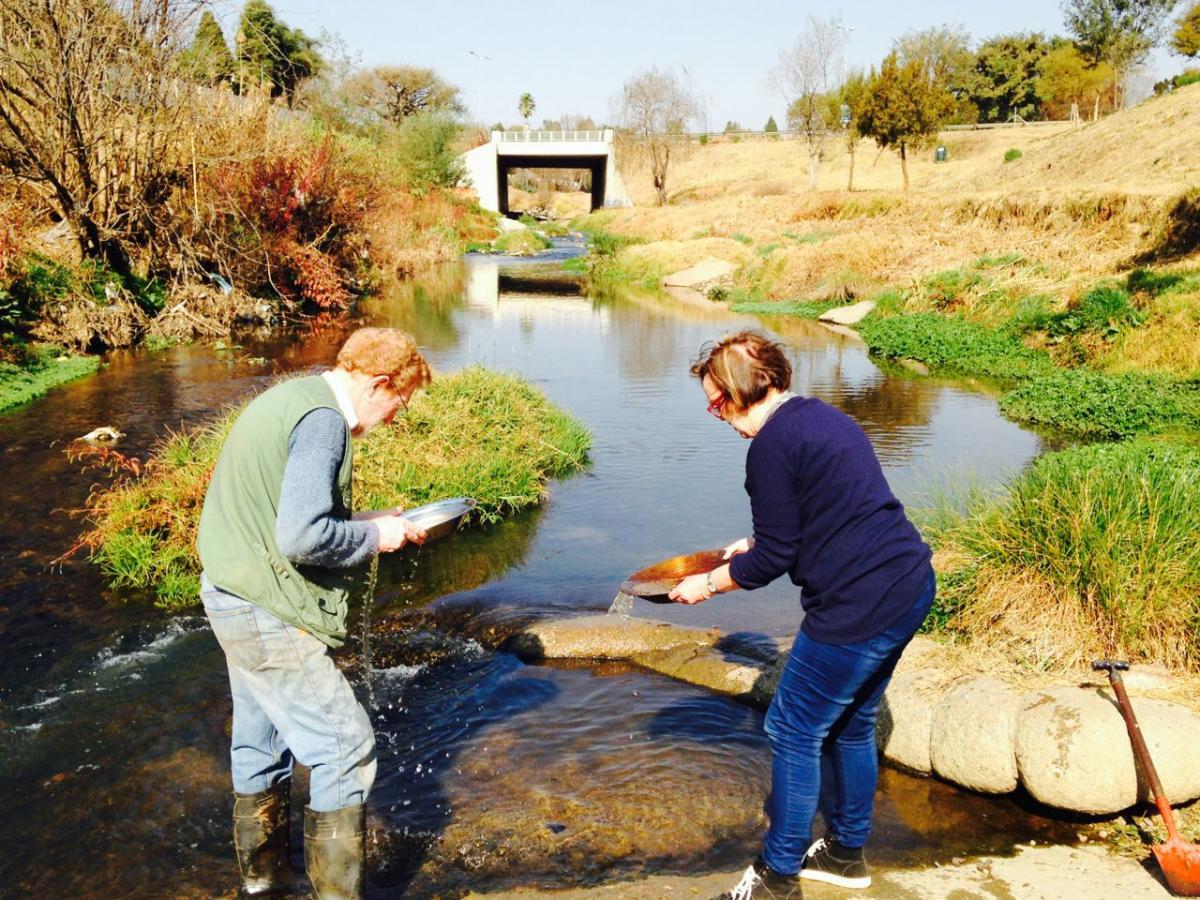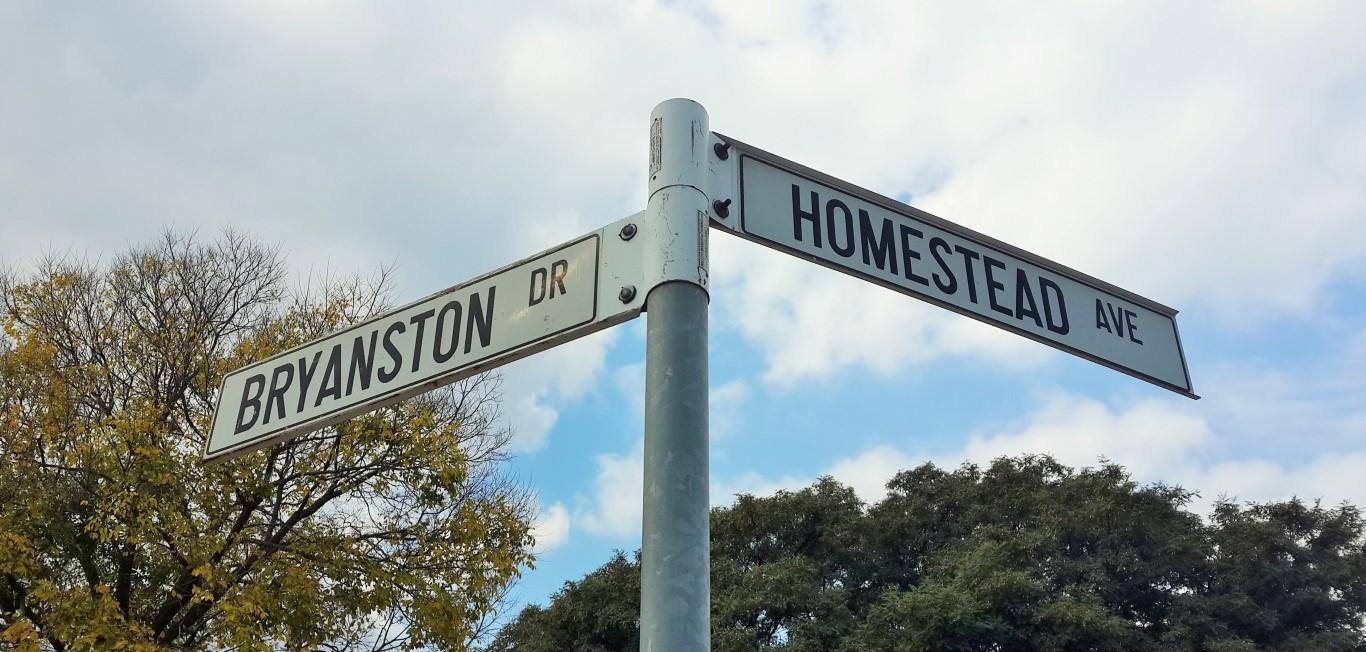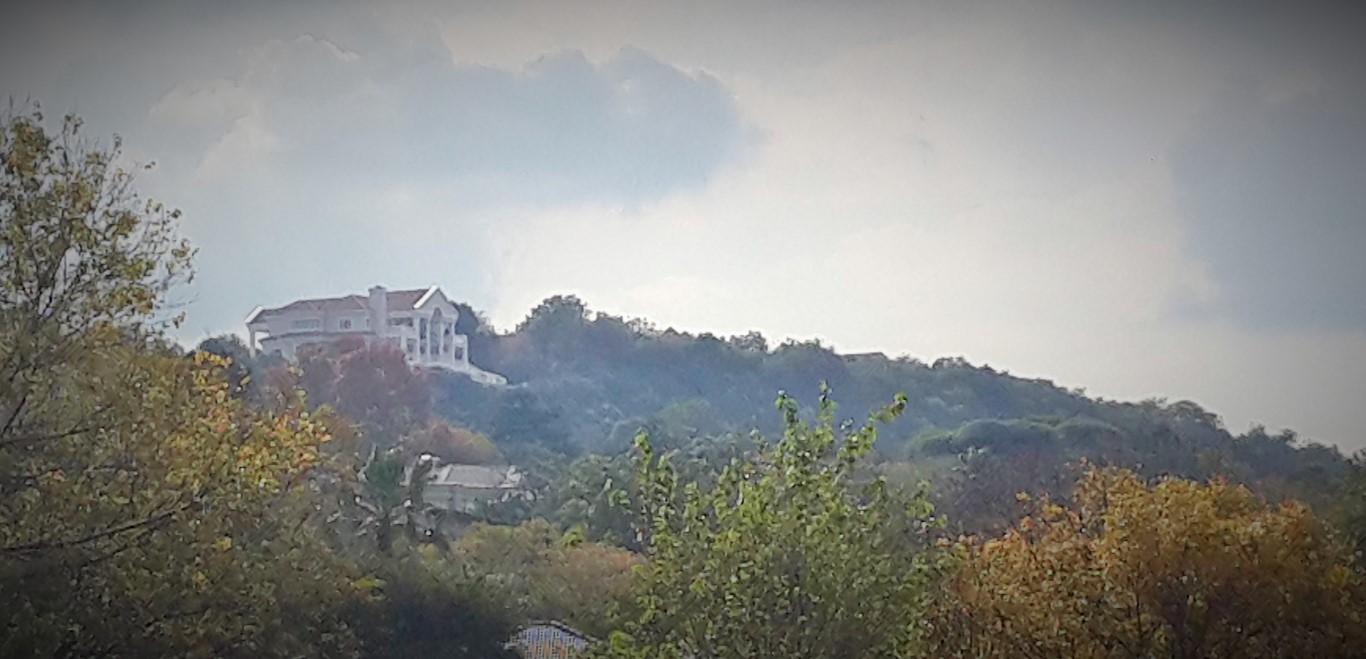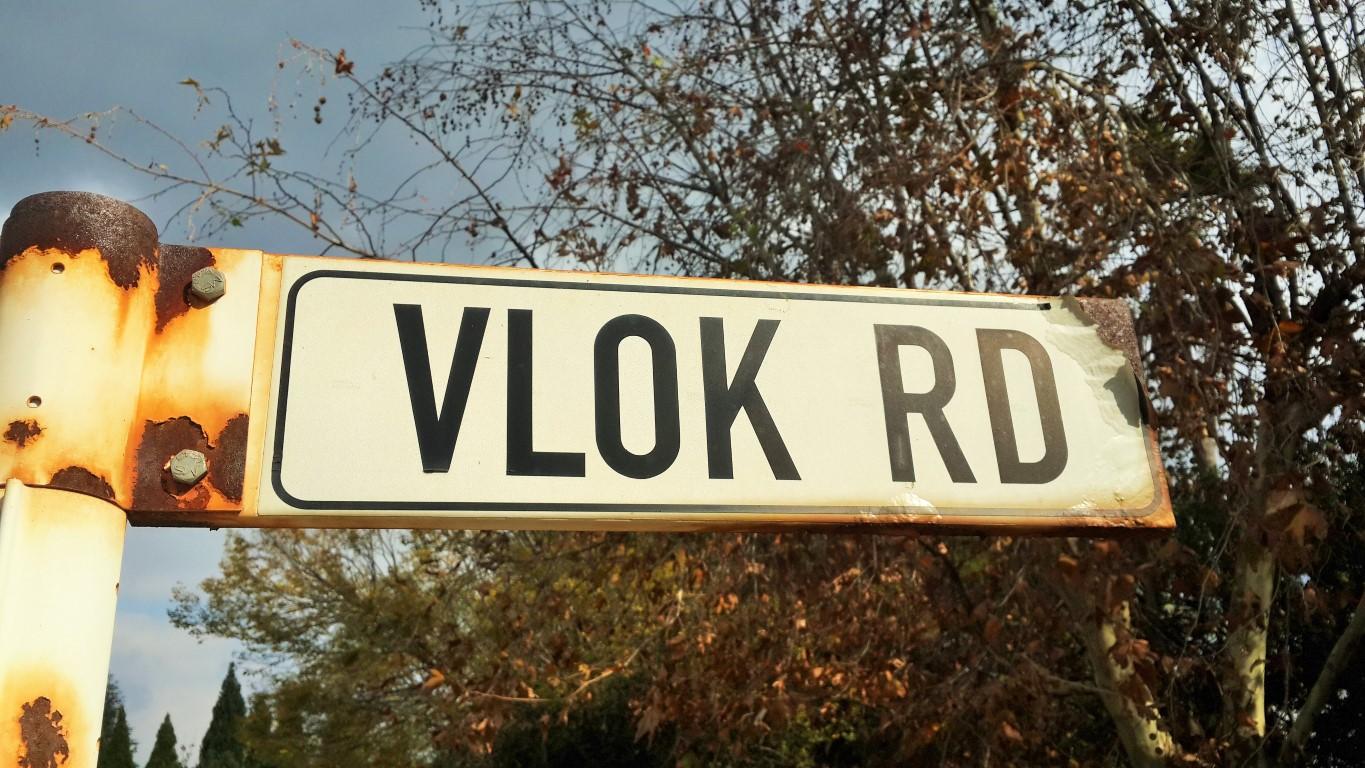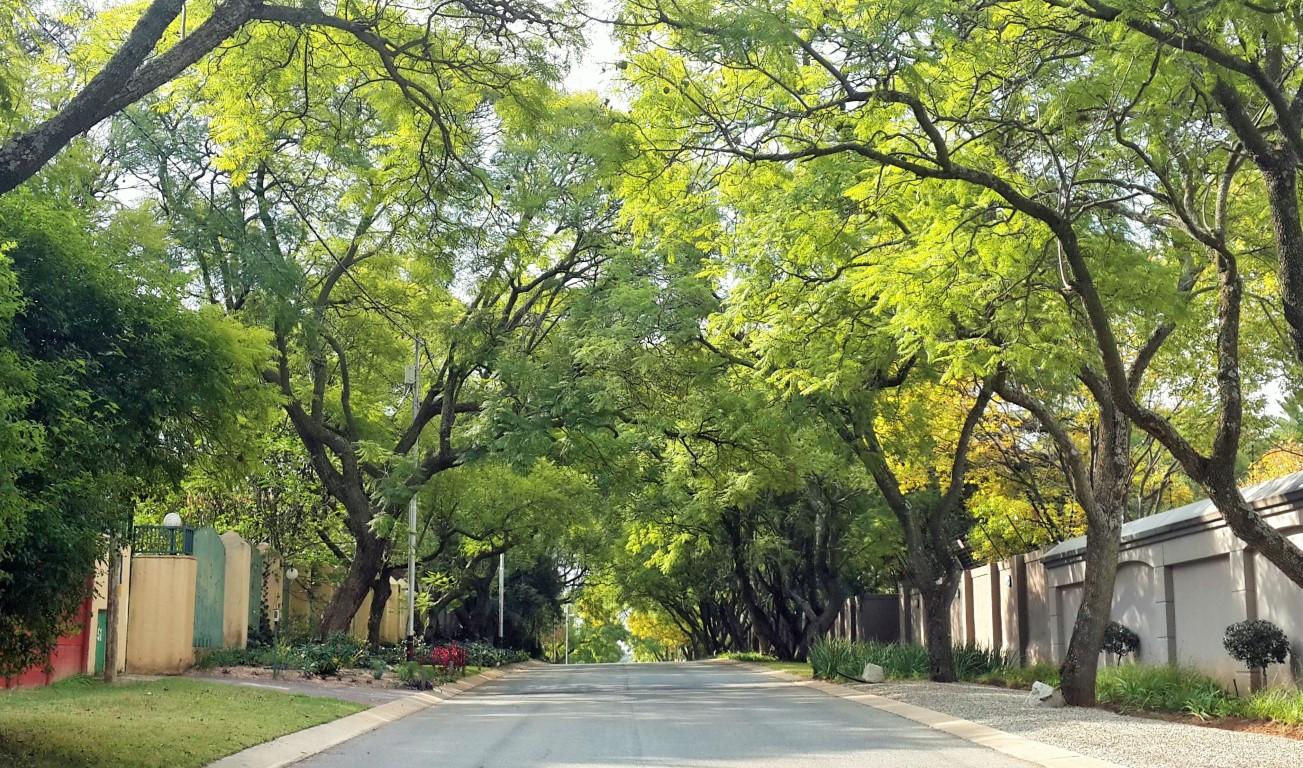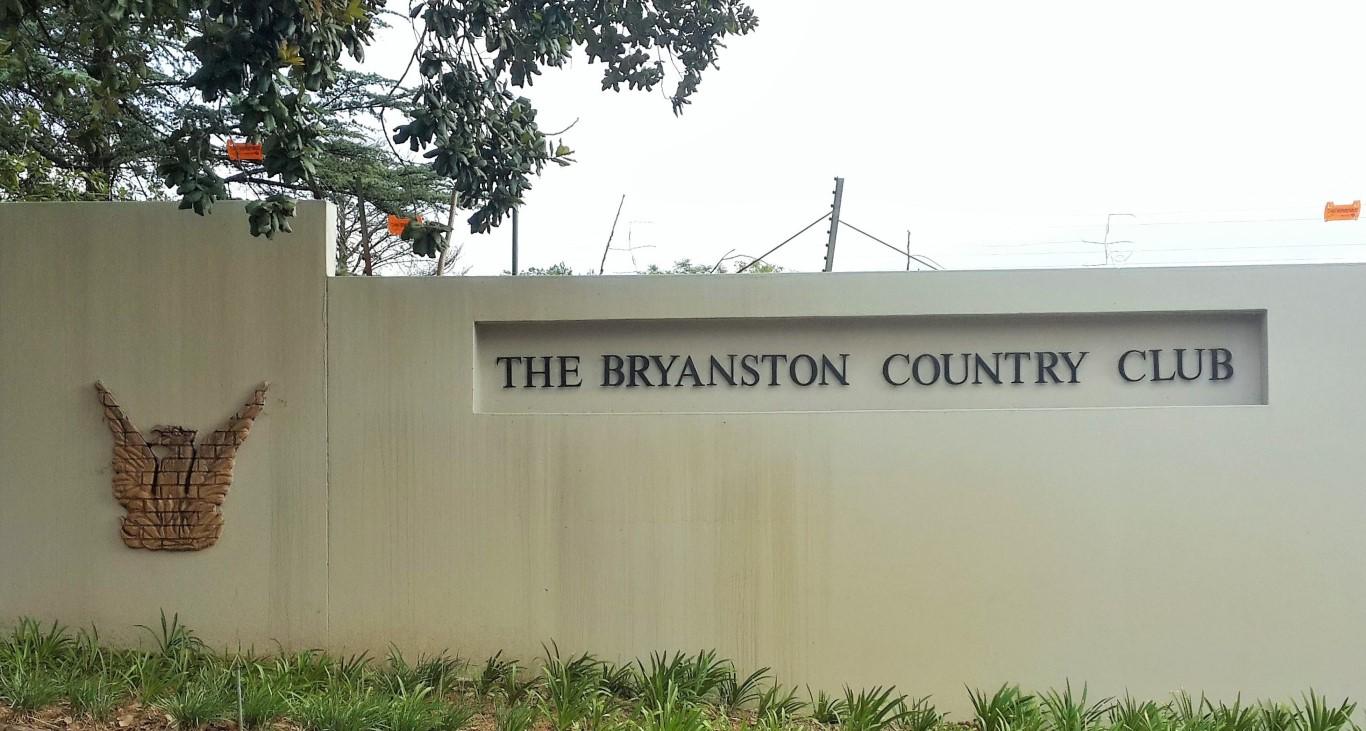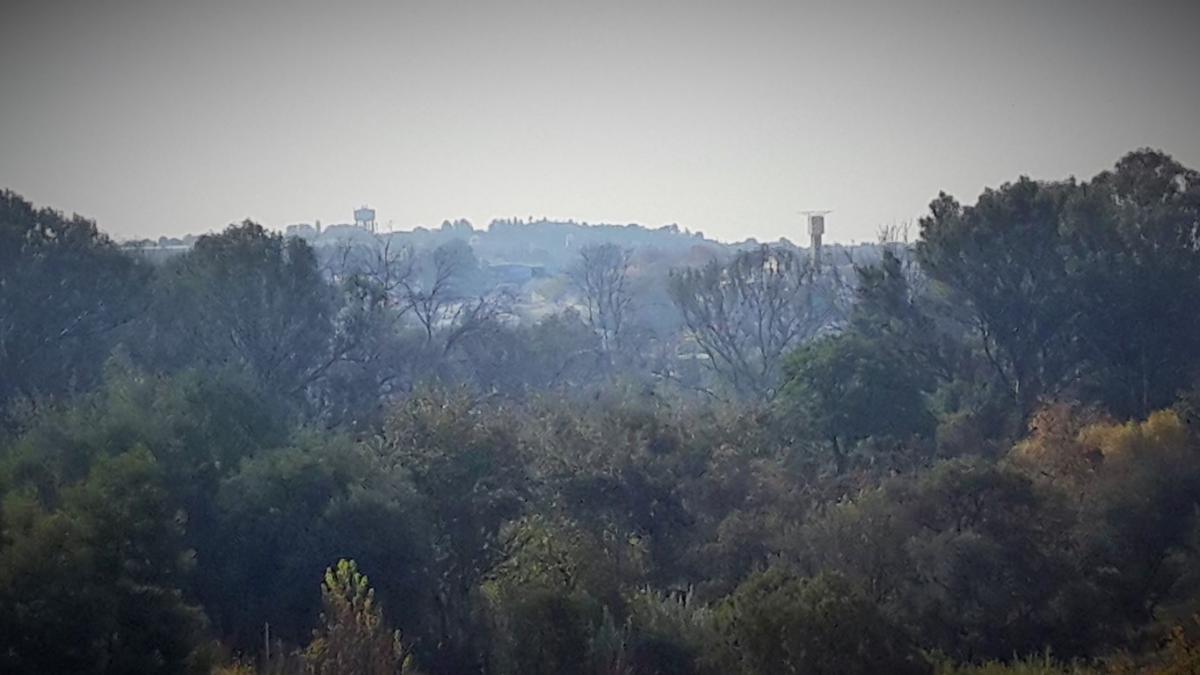
Disclaimer: Any views expressed by individuals and organisations are their own and do not in any way represent the views of The Heritage Portal. If you find any mistakes or historical inaccuracies, please contact the editor.
For many years Bill Hedding was known as the ‘Father of Bryanston’. He played a central role in the development of the suburb and the recording of its history. He was the founder of the now defunct Sandton Heritage Association, a long term city councillor and at one point the Mayor of Sandton. In the late 1970s he gave a speech on the history of Bryanston. Below are a few edited excerpts to give the reader an idea of the origins and development of the suburb.
Because Bryanston is on fairly elevated ground, "modern" early settlement of the area tended to be confined to lower lying areas where water was available, near spruits and rivers. Until recently the area abounded in game, including larger antelopes. With the advance of man with his guns, this game, especially the larger antelopes, soon disappeared, though duiker and steenkop survived until the early 1950s. The tenacious guineafowl survived a decade longer, with a flock still surviving on the undeveloped ground immediately to the north of Bryanston Laerskool in Sloane Street [now filled with a number of residential complexes].
The Braamfontein Spruit which forms the southern and eastern boundary of Bryanston has a special significance in the history of South Africa. A prospector by the name of Pieter Jacobus Marais, while on his way from Potchefstroom to Pretoria in 1878 [other sources state the journey happened in the early 1850s] camped at the natural causeway across the river in Bryanston Extension 7. Being a prospector, he could not resist the temptation to pan the river. To his surprise he found traces of gold. No further investigation took place but this information induced later prospectors, such as Harrison, to work up the Braamfontein Spruit to its source at Langlaagte where outcrops of the main reef series were discovered in the early 1880s which led to the proclamation of Johannesburg as a mining area in 1886. It is not necessary to comment on the significance of this discovery.
21st century Sandtonites pan for gold (The Heritage Portal)
Settlement of the Bryanston area does not appear to have taken place until early in the twentieth century when a few small farms were established mainly along the Braamfontein Spruit and the Klein Jukskei River. Most of the Bryanston area was only used as grazing land. About the year 1900 a substantial house by the standards of those days was erected at what is known today as the Homestead on Homestead Avenue. The walls which were of Kimberley brick and plastered over, were between 18 and 24 inches thick. The house had to be demolished in 1959 because the walls had been honeycombed by ants and the whole structure was in imminent danger of collapse.
Corner of Bryanston Drive and Homestead Avenue (The Heritage Portal)
It was found that fruit trees did well in the area and much of the land which today is covered by the Bryanston Country Club and Mill Hill Estates was developed as deciduous orchards. The area towards the south where Bryanston High School is situated together with other patches of land were cultivated with mealies and farmed by the McDougall family who lived in a house where Bryanston High School now stands.
S.A. Townships Mining and Finance Corporation, together with the other mining houses, started to take an interest in the area lying to the north of Johannesburg and acquired much of the farm Driefontein 3 and portions of Rietfontein 33, together with portions of the farm Zandfontein. Rivonia became quite well settled with small farms along the Braamfontein Spruit and the Orange Grove Stream, but the Bryanston area remained undeveloped by comparison. Around 1925, in response to numerous requests from the farmers settled in the Bordeaux, Ferndale, Driefontein and Witkoppen areas, the S.A. Railways inaugurated a bi-weekly bus service which helped farmers to market their farm produce, such as fruit, poultry and eggs, in Rosebank and Johannesburg.
In 1932, S.A. Townships established Morningside as 4 1/2 acre Agricultural Holdings. This was designed as a logical extension of Sandown which had become substantially settled by both full-time farmers and commuters to Johannesburg. The Rivonia Road along which there was a bus service, ran through the middle of this development.
Being agricultural holdings, it was not incumbent upon the Company to provide any essential services such as water and power. Notwithstanding this however, the demand for plots was very considerable and in a very short space of time the project was virtually sold out. S.A. Townships therefore decided to repeat the operation on a larger scale on property that it had acquired for the purpose, or that it already owned on the farms Driefontein and Rietfontein.
Looking towards a grand home on the Bryanston Ridge (The Heritage Portal)
However, when the project was discussed with the Townships Board in Pretoria, and in those days it was possible for developers to conduct discussions before submitting a formal application, the Board intimated that it would prefer the land to be developed as a township under the new Townships Ordinance 1933, rather than as Agricultural Holdings. This entailed the provision of certain essential services.
Negotiations were entered into with the Victoria Falls and Transvaal Power Co., predecessor to Escom, for the supply of electricity which had come to the area of the Modderfontein Dynamite Factory. The Rand Water Board was prepared to give the Company a water supply from the mains at Maraisburg, but the Company would have to secure the necessary rights of way and establish a pipeline from the supply point at Maraisburg to Bryanston. As this would obviously take a long time, as a temporary measure the Company was given permission to sink a number of boreholes and supply the township from these until such time as the permanent supply could be made.
It was agreed that sanitation would be by means of septic tanks and french drains. The original design of the township consisted entirely of what have come to be called 3-acre stands, which vary from 2 1/2 acres up to almost 5 acres, with the majority being close to 3 acres. However, after doing a market research survey, it was decided that there would be a stronger demand for 1-acre stands.
It was decided that as the Braamfontein Spruit was an attractive area with a substantial number of indigenous trees, the banks thereof would be preserved by creating park strips along the river banks which would be transferred free of cost to the Governor General in Trust for a future local authority. It was visualised that the people who would live in the new township would work in Johannesburg and would be interested in a more rural way of life than was possible in the municipal area of the City. It was considered that they would wish to keep horses and cows. Hence provisions were written into the Conditions of Title allowing and controlling this.
The Township Company was made responsible for the reticulation of power and water. In return for an undertaking that it form, grade and maintain the road systems until such time as this responsibility was taken over by a local authority, the Company was relieved of having to pay endowment money.
In order to find a suitable name for the new township, a competition was run at Head Office with a prize of £5 for the most suitable name. A Mr Saunders suggested "Bryanston" after Bryanston Square in London where the Chairman of the Company, Sir Abe Bailey had his London home. This immediately gave the township a London connotation and it was natural therefore in naming the streets to look to London for suitable names.
All but three of the streets in Bryanston Township are named after streets, squares or other places in and around London. The three exceptions are Payne and Vlok streets near the Library and Homestead Avenue upon which the original homestead was located.
Vlok Road Bryanston (The Heritage Portal)
Bryanston Extension 1 was laid out during the war and the English link was retained in the naming of the streets with such names as Blackpool, Croydon and Coventry. When Bryanston Extension 7 was established, Irish names were chosen and Bryanston Extension 8 was given Scottish names. In order that the Welsh should not be neglected, it was intended to give Welsh names to Bryanston Extension 2, now called Petervale, but upon further reflection it was considered that the Welsh spelling and pronunciation would be beyond the ability of the average South African so artists' names were chosen.
The formal proclamation of Bryanston was delayed because of what came to be a celebrated court case. Over some of the ground which comprised the township, S.A. Townships did not own the mineral rights. Nor did it consider it necessary to acquire such rights since it was accepted on all sides that because of the geological formation of the area the prospects of finding minerals in payable quantities were remote to say the least.
However, a company that owned the mineral rights over a portion of the township interdicted the Company and the Administrator from proceeding with proclamation on the grounds that if a township was established on the ground over which they owned the mineral rights, they would be precluded from prospecting and mining. The Supreme Court granted the interdict and in order not to be held up indefinitely, S.A. Townships purchased the mineral rights at the ransom price of £25 000 having refused to acquire them some years previously for £250.
This was the first of three important cases in South African law dealing with the rights of the mineral rights owner vis-a-vis those of the surface rights owner.
While these legal proceedings were under way, the Company proceeded with the laying out of the township. Erven and roads were surveyed, boreholes for the temporary water supply were sunk, guarantees were furnished to the V.F.P. and an electrical sub-station was built at the corner of Hobart and West Hertford Roads, while the V.F.P. proceeded with the building of the first high tension power line into the northern area of Johannesburg. The old farmhouse in Homestead Avenue was renovated and established as a Township Engineering Office and the first modern house in Bryanston was built next to the sub-station to accommodate the family of Mr Harry Cox, who was in charge of the electrical installation work. This was initially done under contract by Magnusson and Co., by whom Mr Cox was at that time employed, but S.A. Townships had to supply the houses and workshop facilities. Thus this house became the first house to be built in the new area and was completed in 1936.
In 1946 the Company decided to do the electrical work itself and consolidated all its activities at the Homestead. The house was sold and Mr Cox moved over to the Homestead as Resident Engineer.
In designing the township, care had been taken to do it on as modern lines as possible. The expression 'Town Planning' was just coming into use in South Africa. The township was generously endowed with parks and open spaces, particularly along the Braamfontein Spruit, school and church sites, as well as ground for recreational purposes. Erven with shopping or business rights were grouped into four groups, or as they are now called, 'shopping centres'. Care was taken to accord as many residential erven as possible a northern orientation. No flat sites were included. The township had two links to Johannesburg, namely Summit Road through Morningside to the south-east, and Main Road through Ferndale to the south-west. The Bryanston Highway or Nicol Drive as it is often called, came much later. Witkoppen Road was the only access to the north. It was visualised that at some future time Johannesburg would incorporate Bryanston consequently the specifications to which the electrical and water reticulations were constructed conformed with those of Johannesburg. In the event the Peri-Urban Areas Health Board was created in 1943 and established a Local Area Committee incorporating Bryanston with a number of other areas in 1945. The delays in the establishment and proclamation of Bryanston due to the court case proved somewhat of an embarrassment to the company. Sales had taken place so there was no going back as some people were already anxious to take transfer and build. The Company therefore, notwithstanding the lack of proclamation, proceeded with the provision of power, water and roads, and in order to balance this expenditure embarked upon an extensive sales promotion campaign.
Tree-lined Street in Bryanston (The Heritage Portal)
In order to encourage sales the Company excised some three hundred one-acre stands from the township, upon which it promised to build a golf course. In order to help those people who wished to build houses, the Company lent them the necessary finance and in addition built two houses itself to act as an indication of the type of house the Company wished to see erected in Bryanston.
In terms of the township conditions of establishment the Company was given wide powers to control the type, structure and architecture of all buildings. With the outbreak of the Second World War in 1939 a sudden brake on development in Bryanston took place. Proclamation was achieved on 12th June 1940 and during the war many people purchased stands in Bryanston either as a form of saving or to build on after the war.
After proclamation of the township transfer was given to a number of purchasers including those who had built houses and until 1943, when building control was imposed by the Government, some 50 houses were erected. By the time World War II had been brought to a successful conclusion at the end of 1945 there were approximately 70 houses built and occupied in Bryanston. With the return of the ex-servicemen building started again slowly in Bryanston, since it was only ex-servicemen at that stage who could get a building permit. As most of these people were young with young families the absence of schools proved a deterrent.
On 30th June 1950, the Government lifted all controls over building and installation of services, and the township company was thus enabled to continue with the installation of the water and power reticulation and a more affluent homeowner was attracted to Bryanston.
In 1943 Sir Abe Bailey died and Sir Ernest Oppenheimer, Chairman of the powerful Anglo American Corporation group negotiated the acquisition of the Bailey interests in S.A. Townships, thus making S.A. Townships a subsidiary of Anglo American Corp. As promises had been made on behalf of S.A. Townships that a golf course would be established where the Bryanston Country Club is today, much thought was given to this problem after the war as the Company, while prepared to honour its obligation, was unwilling to become too closely involved in running of a golf course.
Entrance to the Bryanston Country Club (The Heritage Portal)
A Mr Arridge and a Mr Bentwick approached the Company separately, each suggesting the formation of a Golf Club. Mr Hedding who was then Estates Manager of Anglo American, got the two parties together and after a long period of negotiations it was agreed that a Country Club would be formed, the present area of the Club would be leased to it and money advanced to establish a golf course, tennis courts, buildings and other amenities normally associated with a country club.
The birthdate of the Club is regarded as July, 1949. The Clubhouse building, which had a large shingle roof, became a landmark in Bryanston, however, in 1953 a devastating fire broke out and notwithstanding the efforts of the Johannesburg Fire Brigade, who rendered fire protection services to Bryanston under an agreement with S.A. Townships, the whole building was gutted. This was a serious blow to the infant club, but in many ways proved a blessing in disguise. The golf course was proving itself to be one of the most attractive courses in Johannesburg and club members buckled to, and with the assistance of S.A. Townships were able to rebuild the clubhouse with a corrugated iron low-pitched roof, and to incorporate many improvements over the original building. The Phoenix was adopted as the Club badge.
Comments will load below. If for any reason none appear click here for some troubleshooting tips. If you would like to post a comment and need instructions click here.

